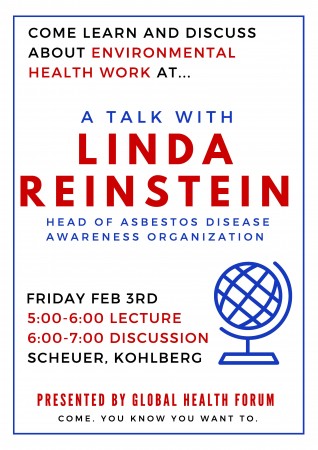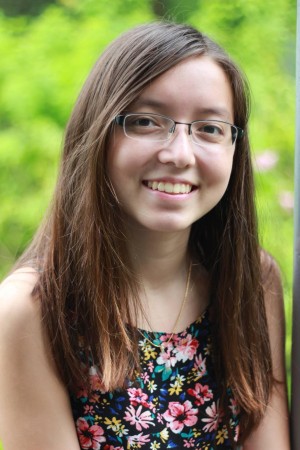One of the greatest pleasures of my with the Asbestos Disease Awareness Organization is when I have the opportunity to travel to universities and connect with students. As part of ADAO’s mission of spreading asbestos awareness and education, I give dozens of public presentations each year, but there’s something special about connecting with students. The Millennial generation is the future — and the future of our anti-asbestos movement is included in that. As such, seeding the future of movement by educating and building relationships with budding scientists, physicians, lawmakers and more is a vital part of working toward an asbestos-free future.
I’ve been honored to present at Yale University’s Unite for Sight Global Health Conference several times over the years, and I invariably meet incredible and inspiring young people there. This past year, I was delighted to meet Serena Sung-Clarke, a Swarthmore College student who traveled to Yale for the conference. Serena, an aspiring biologist, helps organize Swarthmore’s Global Health Club, and she invited me to speak at a club meeting, coming up on February 3.
Since meeting her, Serena’s compassion, curiosity, and go-getter spirit have impressed me tremendously. I’d like to take a moment to introduce her to the ADAO community — she is a truly wonderful example of how young people can make themselves an important part of the solution. Below is a brief written interview with Serena:

I met Linda about a year ago at the Unite for Sight conference at Yale University. She gave a talk about her work there, and I was intrigued by this issue that I had frankly not heard much about.
What did you learn from the Unite for Sight session “Environmental Considerations for Human Health” and Linda’s presentation “Asbestos: The Human Cost of Inaction”?
I’ve always been pretty passionate about climate change and environmental issues. It’s easy to feel removed from these issues on a daily basis, but I believe the session noted accurately that the environment is an extremely human issue. For instance, if you take a look at the increased natural disasters happening around the world, its clear that environmental change is taking a toll on human lives. Likewise, rapid social and scientific progress throughout the last couple centuries have not always allowed sufficient time for us to fully understand the consequences of our actions. Asbestos seemed like a perfect substance for insulation and fireproofing homes at one point, and now we understand it to be extraordinarily toxic. I learned from Linda’s presentation that, shockingly, even if we have the knowledge about the dangers of a pollutant or a given threat, it can still be difficult to solve it because of political and information barriers.
What inspired you to organize your February 3 “Environmental Health Work” lecture and discussion?
I know there are a lot of students, like myself, who are truly concerned about social and environmental issues on both a local and global scale. I was lucky to get to travel to Yale to hear about the important work that people like Linda are doing and to meet them and I thought that many of my peers would benefit from meeting and hearing from Linda.
What do you hope to accomplish with this event?
I’m actually pretty interested to hear about the policy side of things. Public awareness is very important and tied closely to policy and change, but I think public awareness and concern does not always translate into real change and I want to learn more about how change gets implemented.
What are some of your career goals?
To be honest, I’m not completely sure yet. I’m an aspiring biologist, but I’ve also taken an interest in policy and public health as of about a year ago. I’d like to go to graduate school in a subject related to biology and see where that takes me. I just hope to engage in a career that either helps to understand our world better or helps to mitigate the issues that it faces.
What is the most important Global Health asbestos fact that students need to know?
I didn’t know much about asbestos before attending Linda’s talk at all. I think if students knew that asbestos can cause terminal diseases and that it killed thousands of Americans a year, it would make them realize how large an issue this is.
I hope Serena’s story inspires you as much as it does me. If you know any young people itching to make a change, consider sharing this with them. We at ADAO know that together, we can make change happen, and it’s important — perhaps now more than ever — that we spread this spirit.
In unity,
Linda

